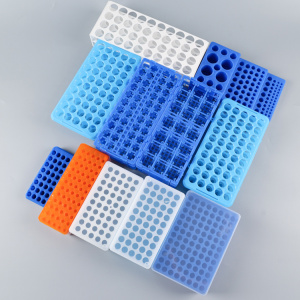What should be paid attention to when using petri dishes?
Petri dish is a laboratory vessel used to grow microorganisms or cell culture. It consists of a flat disc-shaped base and a lid. The material of the petri dish is basically divided into two categories, mainly plastic and glass. Plant material, microbial cultures, and glass-attached cultures of animal cells are also commonly used. The plastic is made of polyethylene and is suitable for laboratory inoculation, inoculation and isolation of bacteria and also for culturing plant material.
It was originally designed in 1887 by the bacteriologist Julius Richard Petri (1852-1921) under the German biologist Robert Koch, so it is also known as the "Godfather" . Li's petri dish". The petri dish is fragile and should be handled with care when cleaning and handling.It is best to clean the used culture dishes in time and keep them in a safe and fixed place to avoid damage and breakage.

1. Washing of Petri dishes
a) Soaking: New or used glassware should be soaked in water first to soften and dissolve the attachments. New glassware only needs to be scrubbed with tap water before use, and then soaked in 5% hydrochloric acid overnight; used glassware usually has a lot of protein and oil attached to it, which is not easy to wash off after drying. Therefore, it should be soaked in clean water and scrubbed immediately after use.
b) Scrubbing: put the soaked glassware into dishwashing water, and scrub it repeatedly with a soft brush. Leave no dead space and avoid damaging the surface finish of the appliance. Wash and dry the cleaned glassware for pickling.
c) Pickling: pickling is to soak the above-mentioned commodities in cleaning solution, also known as acid solution, to remove the substances that may remain on the surface of the commodity due to strong oxidation of acid solution. Pickling should be no less than six hours, usually overnight or longer. Be careful with utensils.
d) Rinse: tableware must be fully rinsed with water after scrubbing and staining. Whether the utensils are cleaned after pickling directly affects the success or failure of cell culture. Hand wash pickled utensils. Each utensil must be repeatedly "water-emptied" at least 15 times, and finally washed 2-3 times with double distilled water, dried or dried and packed for later use.
e) Sterilization: Disposable plastic petri dishes are generally sterilized by irradiation or chemical sterilization when they leave the factory.
2. Classification of Petri dishes
a) According to the different uses of the petri dish, it can be divided into cell culture dish and bacterial culture dish.
b) According to the different manufacturing materials, it is divided into plastic petri dishes and glass petri dishes, but both imported petri dishes and disposable petri dishes are made of plastic materials.
c) According to different sizes, it can usually be divided into petri dishes with diameters of 35mm, 60mm, 90mm and 150mm.
d) According to the different partitions, it can be divided into 2-separated petri dishes, 3-separated petri dishes, etc.
e) The material of the petri dish is basically divided into two categories, mainly plastic and glass, and glass can be used for plant materials, microbial culture and animal cell adherence culture. The plastic ones may be made of polyethylene, and there are disposable and multiple-use ones, which are suitable for laboratory inoculation, streaking, and isolation of bacteria, and can be used for the cultivation of plant materials.
3. Matters needing attention in the use of culture dishes
a) After cleaning and disinfection before use, whether the petri dish is clean or not has a great influence on the work, which can affect the pH of the medium. If there are certain chemicals, it will inhibit the growth of bacteria.
b) The newly purchased petri dishes should be rinsed with hot water first, and then soaked in a hydrochloric acid solution with a mass fraction of 1% or 2% for several hours to remove free alkaline substances, and then rinsed twice with distilled water.
c) If you want to cultivate bacteria, use high-pressure steam (generally 6.8*10 to the 5th power of Pa high-pressure steam), sterilize at 120°C for 30 minutes, dry at room temperature, or sterilize with dry heat, that is, put the Petri dish Put it in an oven and keep the temperature at about 120°C for 2 hours to kill the bacterial cells.
d) Only sterilized petri dishes can be used for inoculation and culture.



